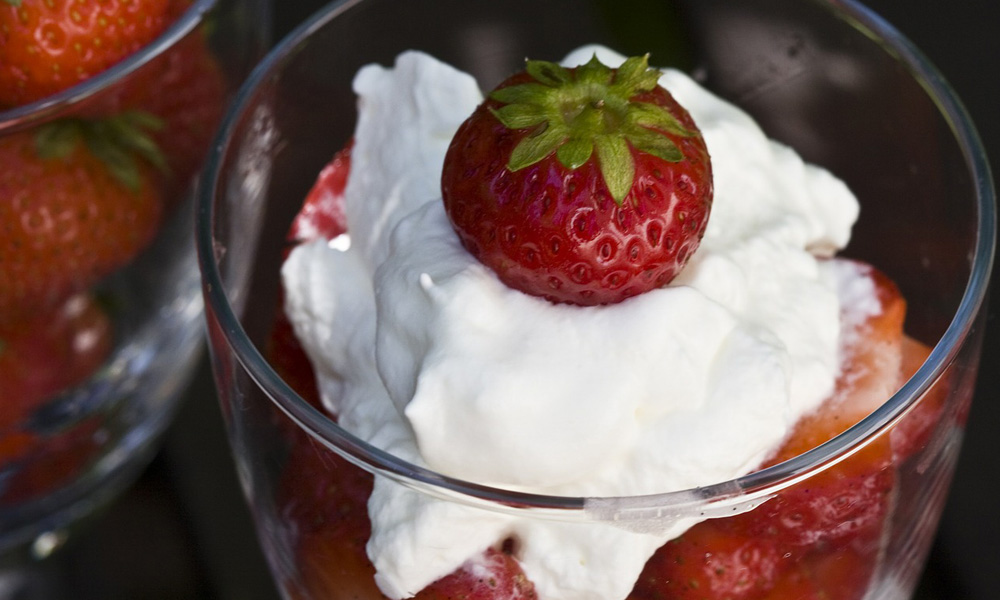Learning how to navigate through a dairy-free diet has a steep learning curve, but with time and experience, the grocery store becomes less daunting and recipes become easier to convert.
Here are 10 Dairy Substitutions that will help make a transition to dairy-free living a breeze.
Milk
There are many dairy-free milk substitutes to choose from. The most popular non-dairy beverages are made with soy, almond, rice, coconut, oats or hemp. Non-dairy beverages can be fortified with calcium and vitamin D to levels comparable to cow’s milk, although only soy milk has a comparable amount of protein and fat. Dairy-free beverages are sold in shelf stable tetra packs and are becoming easier to find as they are sold in most grocery stores, some pharmacies and I’ve even seen some in dollar stores.

Butter
Olive oil with balsamic vinegar or herb infused oils are an excellent dairy-free alternative to use instead of butter at the dinner table. But if you’re craving the taste of real butter, there are some great tasting dairy-free buttery spreads that also work wonderfully for cooking and baking. These vegan butters are usually a blend of several oils and can use soy, rice or pea protein. We use Earth Balance brand in our home. Another great alternative to butter that I enjoy using, especially in my baking, is coconut oil with a dash of salt. Coconut oil is solid at room temperature and has a different density than butter, so it’s important to use a kitchen scale to measure the quantity of coconut oil required when converting recipes.
Coffee Cream
Easily replace coffee cream with dairy-free soy or coconut creams that are specially formulated to add to coffee and hot beverages. Some brands, like So Delicious, offer Coconut Cream that is French Vanilla or Hazelnut flavored. Beware of non-dairy powdered coffee creamers, as they can sometimes contain casein, which is a milk protein and not safe to consume for people with dairy allergies.
Whipped cream
Whipped cream is cream that is whipped by a whisk until it is light and fluffy. Dairy-free whipped cream can be made the same way that regular whipped cream is made, by substituting coconut cream or any dairy-free cream. There are also some great ready-made dairy-free whipped dessert toppings to choose from.

Buttermilk
Buttermilk is slightly sour and thicker than regular milk, because it is slightly curdled. It’s main purpose to provide lightness and lift in baking – the lactic acid of buttermilk reacts with baking soda when heated and releases tiny bubbles. A cup of buttermilk is easily replaced with 1 cup of any non-dairy milk and 1 tablespoon of white vinegar or lemon juice. Allow the mixture to sit for about a minute until it curdles.
Condensed milk
It’s difficult to find a convenient equivalent in packaged goods for dairy-free condensed milk, but luckily, a homemade dairy-free condensed milk is fairly easy to make. Just bring to a boil 2½ cups of any dairy-free milk with ½ a cup of sugar and a dash of salt and simmer for about 2 hours, until reduced to half.
Yogurt
Yogurt is created by bacterial fermentation of milk, which produces lactic acid that gives it a creamy texture and slightly sour taste. There are some great tasting soy, rice and coconut based yogurts available in specialty food stores and grocery stores. You can also make your own dairy-free yogurt by adding probiotic powder to dairy-free milk and allowing it to ferment.
Cheese
There are a few different ways to substitute cheese, depending on what the cheese is used for. A dash of nutritional yeast and salt on top of a dish adds a distinct “cheesy” flavour. Vegan cheese, like Daiya brand, melts and stretches similar to dairy cheese and would be ideal for pizzas, baked nachos, grilled cheese sandwiches and sauces. When purchasing plant-based cheese, make sure to read labels thoroughly as some soy cheeses can contain casein, which is a milk protein.

Ice Cream
There’s a growing selection of dairy-free ice creams made with soy, rice, coconut or almond, although you usually need to go to a specialty grocery store or health food store to find them, and they are significantly more expensive than regular ice cream. If you have an ice cream maker, homemade dairy-free ice cream can be made by simply replacing dairy-free milk alternatives in your recipes. If you don’t have or want an ice cream maker, you can still enjoy a delicious and creamy frozen dessert by blending frozen bananas in a food processor or blender until it resembles soft-serve ice cream.
Whey Protein Powder
Whey protein comes from whey, the watery portion of milk that separates from the curds in cheese production. Whey protein powder is commonly used as a food supplement in smoothies to help build muscle mass and improve athletic performance. There are many plant-based protein powders made with pea, brown rice, soy, hemp or nuts that could easily replace whey protein. You can find vegan protein powders in health food stores and are becoming more commonly available in grocery stores and other big box stores.





COMMENTS